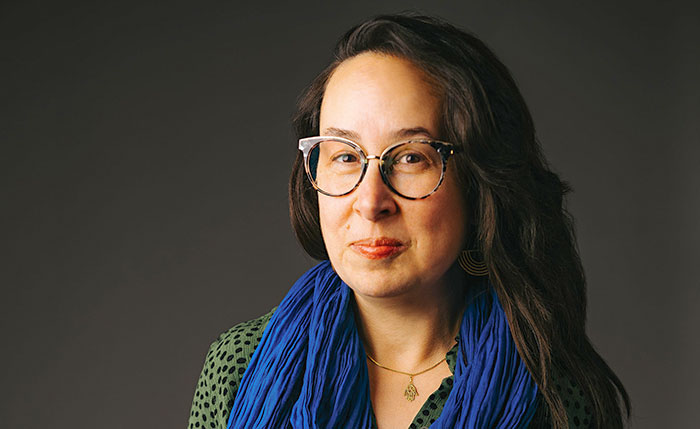Defining neighborhoods is easier said than done
From 1968 to 2001, the well-loved Fred Rogers sang “Won’t you be my neighbor?” on the Public Broadcasting Service (PBS), lauding the benefits of a neighborhood.
While most homeowners have their own idea of what a neighborhood entails, Claremont resident and psychologist Andrew Lohmann recognizes the discrepancies between what residents believe their neighborhood is, and how agencies like the US Census Bureau map them.
Mr. Lohmann is launching a campaign to help close that gap.
Our Neighborhood Mapping Project is an effort to more accurately represent the way researchers view communities, an endeavor underway in the city of Claremont with Mr. Lohmann’s leadership. The eager Claremont resident and academic hopes his research will change maps and minds alike when it comes to studying a city’s neighborhoods.
“Do you know the census block you live in? Do you know its boundaries?” Mr. Lohmann queries on his campaign website. “Probably not. Yet, researchers of neighborhoods often use these census areas to study them. If we want to understand neighborhoods—what makes them tick…we need to get it right.”
Instead of using census blocks or school districts, Mr. Lohmann suggests using maps designed by residents themselves, an approach he developed during his graduate studies at Claremont Graduate University from 1997-2006. Our Neighborhood Mapping Project is a third and final set of surveys to help solidify Mr. Lohmann’s findings.
“Being a cautious academic, I know full well that I cannot rely on just 2 data points,” Mr. Lohmann said, thus embarking on his latest project by asking the Claremont community to help financially support what he notes as a revolutionary set of mapping.
He conservatively estimates his costs at $3000, primarily funding the printing and postage of maps and community surveys.
Mr. Lohmann fostered a keen interest in neighborhood dynamics years before embarking on his latest, multi-year undertaking. The close-knit community of his south Claremont neighborhood fueled a deeper interest in community, further enhanced after surveying Claremont neighborhoods during his coursework and then dissertation at CGU.
With the help of the city and other sources, Mr. Lohmann surveyed residents, providing city maps and asking neighbors to draw what they saw as “their neighborhood.” Mr. Lohmann found himself intrigued by the findings.
“One resident drew a circle on their home and another around the Claremont Colleges, but nothing else,” Mr. Lohmann said. Another respondent in south Claremont had a big bubble in south Claremont and a thin strip that traveled up and around the Wilderness trails. “You can tell so much about what a person’s interests are, what they do, just by these maps.”
The opening of the 210 freeway proved to be another pivotal launching point. It just so happened that Mr. Lohmann’s first map survey was conducted 2 years before the launch of construction on the 210 freeway. When it came time for his dissertation, it was 2 years after the freeway’s completion.
“It was serendipitous,” he said.
As part of his dissertation, Mr. Lohmann conducted a second wave of research. He wanted to compare the sense of community polled during his last survey with a second round of surveys of the same community-drawn neighborhood maps.
“We have environmental impact studies, but we don’t really have the mechanism by which to measure the social impact of these construction projects and what we can do to make a neighborhood more cohesive,” he said.
He found that the sense of community diminished in neighborhoods near the 210 freeway, while all other areas in Claremont rose. The decrease took place even though there was no physical alteration or division in the neighborhoods caused by the 210 freeway’s structure.
“It’s an open-ended question as to why,” Mr. Lohmann said. He has his theories: “Some say noise from the freeway. The decibel level when in a neighborhood next to a freeway is pretty much like trying to talk next to a vacuum cleaner.”
The only freeway neighborhood that saw a rising sense of community was a neighborhood near the strawberry patch, located at Base Line Road and Towne Avenue. Surprised by this inconsistency with the rest of the freeway neighborhoods, Mr. Lohmann conducted further research. He discovered that the strawberry field was a location where the city had been proposing a new set of housing, roughly 3 months before he conducted his second survey.
“The methodology picked it up,” Mr. Lohmann speculates of the increased sense of community felt by this neighborhood. “The residents in that area had banded together.”
Mr. Lohmann hopes to turn his speculations into certainties with the help of a new set of data. If he receives the needed funding, research is set to begin next month. The journey will be labor-intensive, but it’s a commitment he fully embraces.
“It needs to be done,” Mr. Lohmann said. “We need to change the way we are studying neighborhood dynamics so it can be more accurate.”
To find out more about Our Neighborhood Mapping Project or to make a donation, visit Kickstarter.com and search under “Claremont.”
—Beth Hartnett
news@claremont-courier.com










0 Comments